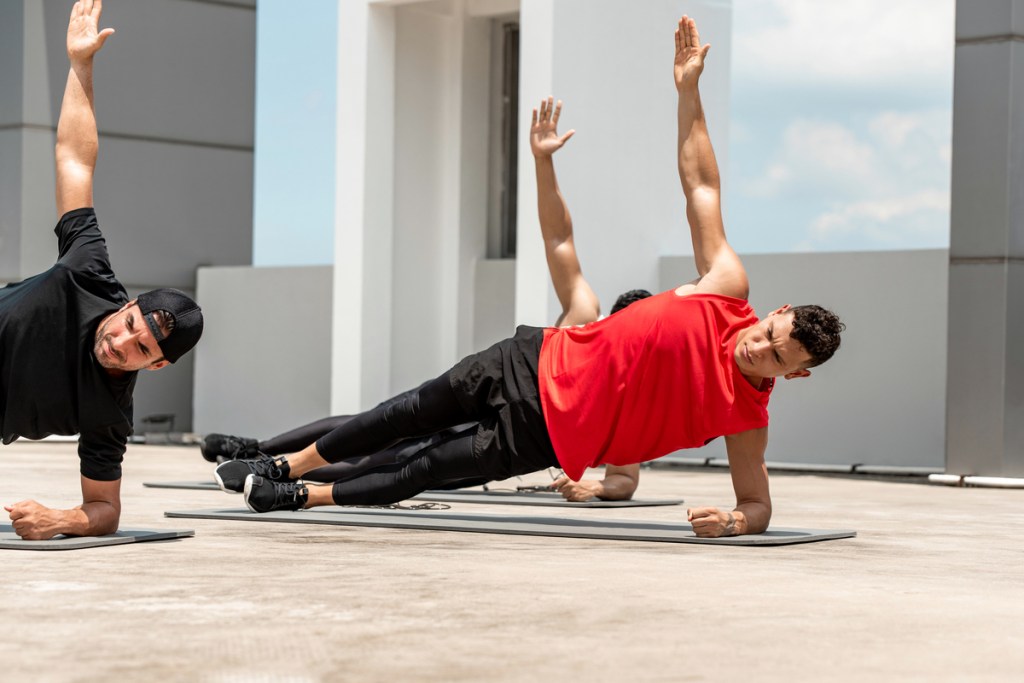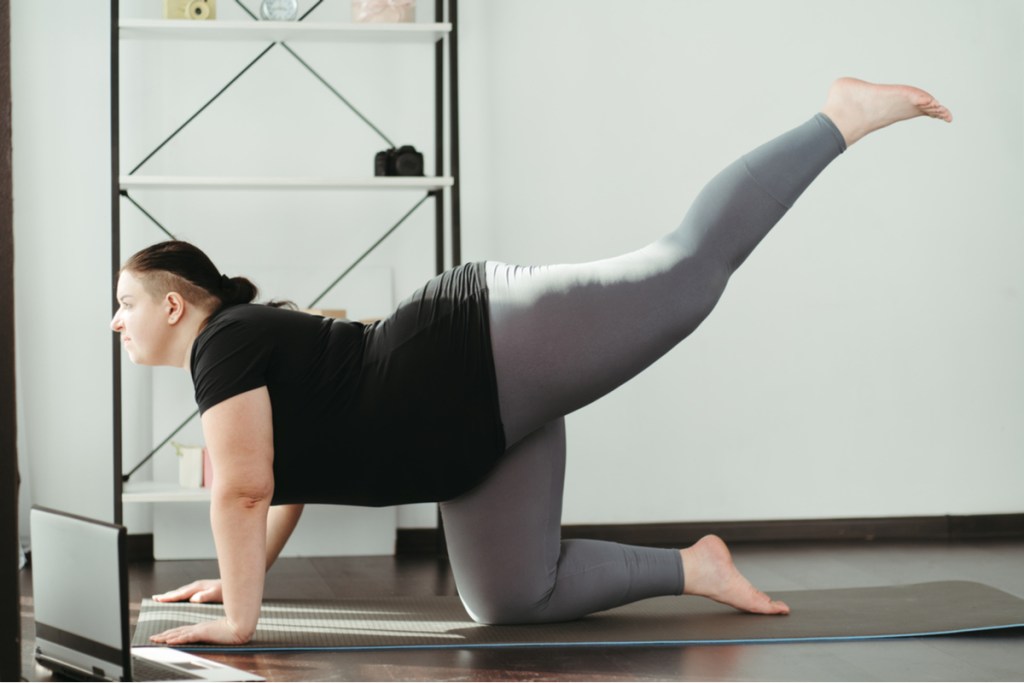Tabata training is an exercise program designed to burn maximum calories in minimal time. This high-intensity workout doesn’t require a lot of space or equipment, making it perfect for an at-home sweat session. This regimen has gained enormous popularity because this quick, strenuous workout is perfect for people with only a few extra minutes in their day to devote to exercise.
Here, we’ve assembled a quick guide to help you better understand the ins and outs of Tabata training, so grab a water bottle, a pair of sneakers, and a yoga mat because it’s time to get our bodies moving.

What is Tabata training?
Originally developed for ice skaters in Japan, this intense exercise program, like many high-intensity interval training (HIIT) programs, burns lots of calories over a comparatively short period of time. This program alternates between twenty-second bursts of high-intensity exercises and ten seconds of rest. The set is repeated eight times for a total of four minutes, and every four-minute repetition is considered one “Tabata.”
Many use a treadmill or stationary bike for this workout, but many other plyometric moves are fair game. This includes, but is not limited to:
- Jump rope
- Sprints
- Push-ups
- Planking
- Jumping jacks and/or squat jacks
- Burpees
- Lunges
Just because it’s short, doesn’t mean it’s easy. Novice exercisers will have a hard time getting through those seemingly interminable minutes. Just like everything in life, practice makes perfect, so don’t be disappointed if you can’t make it all the way through without a few extra breaks.

What are its health benefits?
Michele Olson, a Tabata expert and exercise-science researcher with Auburn University at Montgomery in Alabama, said that despite its short durations, Tabata can burn substantially more calories than more time-consuming and lower-intensity forms of exercise.
“This particular style of interval training has profound effects even on short-term, post-exercise metabolism. It would take five times the amount of typical cardio exercise, like 20 minutes of very brisk walking, to shed the same number of calories that result from a four-minute Tabata…Having limits on time is one of the biggest obstacles to exercise for many in the population. If you can achieve the same benefits doing short bouts of exercise that would normally take 20-30 minutes…[that] will play a meaningful role in exercise participation and health promotion.”
Enhanced cardiovascular health is associated with lower risks of problems related to the heart, brain, blood sugar, and certain cancers.

How do I start?
A quick web search unveils almost innumerable Tabata videos. Below, we share some of our favorites, but we encourage you to try different channels and trainers until you discover what works best for you.
Each video will be effective, but you’re more likely to stick with a program you actually like. Do you prefer burpees over jump rope? Or maybe you love the first five minutes of one video, but the last ten a separate routine. That’s great! Mix and match your Tabatas to curate a workout program that works best for you. Don’t forget the basics though, and be sure to stretch, pay attention to your form, and start slowly to prevent injury.
Tabata may just be the ideal exercise regimen for modern life. It delivers big benefits in little time, all at low (or no) cost in a space-efficient setting. Gyms are becoming more expensive and more crowded by the day, so keep some money in your pocket and try out a home-based routine. In minutes, you can complete a total body workout that is simple and unique to your individual preferences and needs. Next time you have a few minutes to spare, this blood-pumping exercise will always be a great investment of your time.
BlissMark provides information regarding health, wellness, and beauty. The information within this article is not intended to be medical advice. Before starting any diet or exercise routine, consult your physician. If you don’t have a primary care physician, the United States Health & Human Services department has a free online tool that can help you locate a clinic in your area. We are not medical professionals, have not verified or vetted any programs, and in no way intend our content to be anything more than informative and inspiring.



